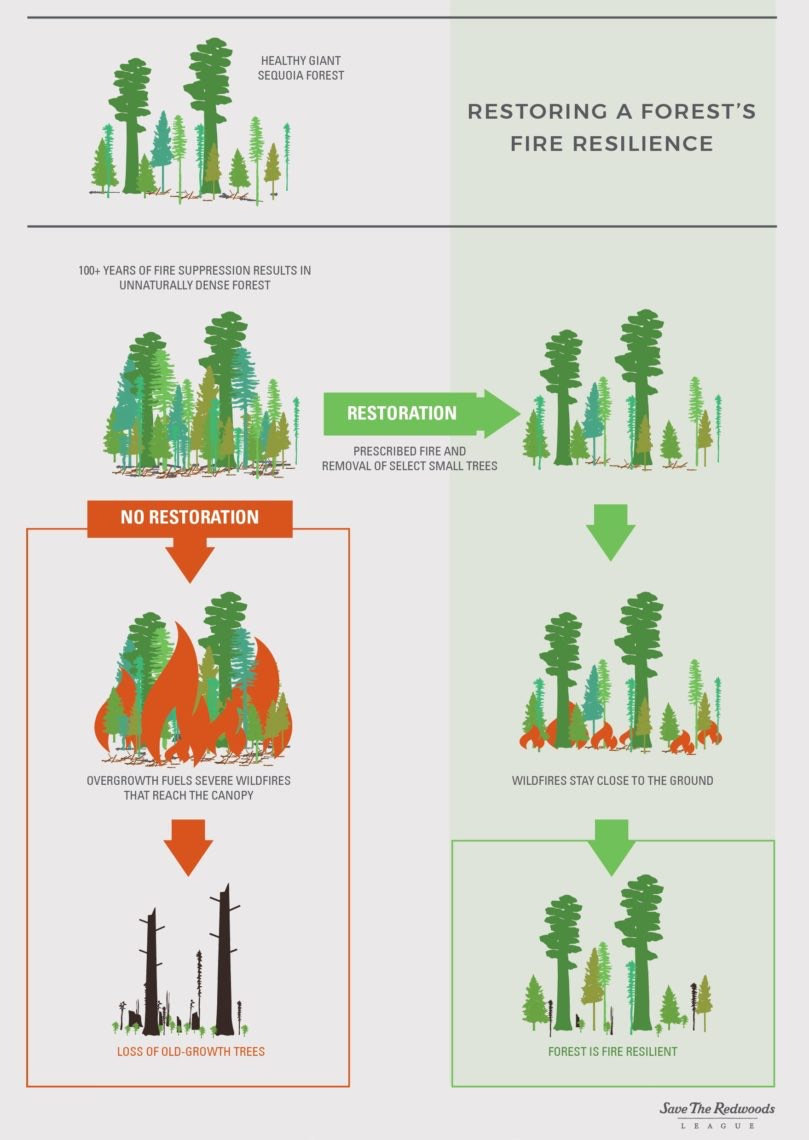How Forest Restoration Can Save the World
We need to be thinking about fire differently, like, now.
Hello! I came to your inbox to share this beautiful infographic created by Save The Redwoods League.
This is such a succinct picture of how frequent, low-severity fire can create more resilient forests.
In the next couple months, I’ll be highlighting smaller communities who are changing their relationships to fire. I'll also be sharing some work in relation to the importance of wolves and other predators, and how, like fire, they are essential to ecological balance.
Right now, Biden’s ten year plan for forest resilience is going into effect. Funds are being distributed throughout the United States, beginning with the most high-risk communities and forests, called “firesheds.” Some of those are located here in Washington State, and money is going directly to non-profits and smaller communities in order to implement a healthier, more resilient relationship with wildland fire.
That things are moving on a national level is wonderful. But we can’t count on a top-down approach for many reasons— because there are countless ecosystems and habitats and communities throughout the United States, and no homogenous guidelines will fix what’s broken about fire suppression.
In order to change, we need to be working on a community level. Is something remarkable happening in your community? Are you seeing good fire more often? Please leave a comment and tell me about it!
While you’re here, consider becoming a paying subscriber to FIRES, and support my mission in educating the public about good fire, TEK, the history of fire suppression, and worker’s rights.
If you are someone doing small-scale work in your community, and you’d like to be interviewed, reach out to me.




Love this. Even exiled as we are from California right now we're working to establish a forest on our 6 suburban acres. Haven't tried Redwoods as yet. This is all mostly deciduous forest.